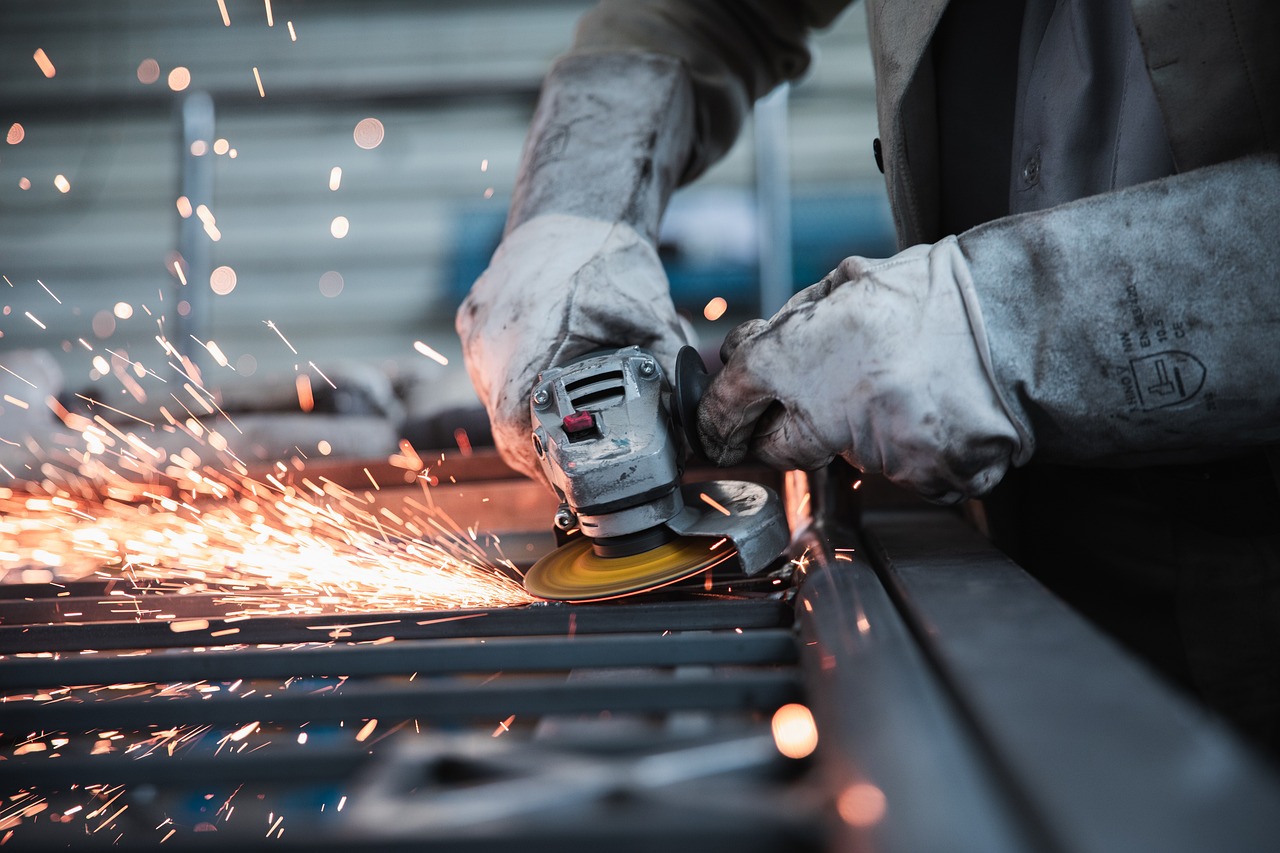Understanding Steel Grades: A Guide to Choosing the Right Material for Your Project

Steel is one of the most widely used materials in construction, manufacturing, and countless other industries. But did you know that not all steel is created equal? Steel comes in various grades, each with unique properties designed for specific applications. Whether you’re working with corrugated rods, malla electrosoldada, or other forms of steel, choosing the right grade can make or break your project. Whether you’re constructing a skyscraper or fabricating machinery parts, understanding these differences is crucial. In this guide, we’ll take you through the essential aspects of steel grades. You’ll learn what factors to consider when selecting a material and discover common types and their uses. By the end of this post, you’ll be well-equipped to make informed decisions about which steel grade fits your needs best. Let’s dive into the world of steel.
Factors to Consider When Choosing a Steel Grade
 Choosing the right steel grade involves multiple factors. Start with your project requirements. Consider the mechanical properties needed, such as tensile strength and hardness. Next, think about environmental conditions. Will the steel be exposed to moisture or extreme temperatures?
Choosing the right steel grade involves multiple factors. Start with your project requirements. Consider the mechanical properties needed, such as tensile strength and hardness. Next, think about environmental conditions. Will the steel be exposed to moisture or extreme temperatures?
These elements can influence corrosion resistance and overall performance. Cost is another critical factor. Different grades come at varying price points. Balancing budget constraints with quality is key for any successful project. Don’t forget about availability. Some steel grades may not be readily accessible in your area, which could delay timelines.
Common Types of Steel Grades and Their Uses
Steel grades come in various types, each tailored for specific applications. Carbon steel is among the most common. It’s often used in construction and manufacturing due to its strength and versatility. Alloy steel adds different elements like chromium or nickel, enhancing properties such as toughness and corrosion resistance. This type is favored in automotive parts and machinery. Stainless steel stands out with its remarkable ability to resist rust. It’s ideal for kitchen appliances, medical instruments, and outdoor structures where durability matters.
Advantages and Disadvantages of Popular Steel Grades
Popular steel grades each come with their own set of advantages and disadvantages. For instance, carbon steel is widely favored for its strength and durability. It’s relatively inexpensive, making it a go-to choice for construction projects. However, it can be prone to rust if not properly treated. On the other hand, stainless steel boasts excellent corrosion resistance thanks to its chromium content. This makes it ideal for applications in harsh environments. Yet, this quality comes at a higher price point compared to carbon steel. Another option is alloy steel, which combines various elements to enhance specific properties like toughness or wear resistance. While these enhancements are beneficial, they often lead to increased costs and complexity in welding and fabrication processes.
How to Determine the Quality of a Steel Grade
 Determining the quality of a steel grade involves several key factors. Start by examining its composition. Different alloys and elements can significantly impact performance. Next, consider mechanical properties such as tensile strength and hardness. These attributes indicate how well the steel will perform under stress or load.
Determining the quality of a steel grade involves several key factors. Start by examining its composition. Different alloys and elements can significantly impact performance. Next, consider mechanical properties such as tensile strength and hardness. These attributes indicate how well the steel will perform under stress or load.
Testing methods also play a critical role in assessing quality. Techniques like ultrasonic testing or magnetic particle inspection help identify internal flaws that may not be visible to the naked eye. Certification from reputable organizations adds another layer of assurance. Look for certifications that confirm compliance with industry standards.
In Conclusion
Understanding steel grades is essential for making informed decisions in your project. Each grade has its unique properties, ensuring it meets specific requirements. The right choice can enhance structural integrity, improve durability, and even influence aesthetics. Choosing the appropriate steel grade involves evaluating various factors such as strength, corrosion resistance, cost-effectiveness, and application-specific demands. By carefully considering these aspects, you can tailor your material selection to align with project goals. Familiarity with common types of steel grades, carbon steels, stainless steels, and alloy steels, can guide you toward suitable options for construction or manufacturing needs. Each type serves distinct purposes and offers varying advantages that cater to different industries. While popular steel grades come with their own set of benefits and drawbacks, understanding these …


 A house fire can cause significant structural damage, smoke and water damage, and potential health hazards from lingering toxins. This is why it’s crucial to have a thorough inspection of the property before making any decisions on purchasing a fire-damaged house. During an inspection, a certified professional will assess the extent of the damage and identify any safety concerns or code violations that may require repairs. This information is crucial for potential buyers to make an informed decision about the property and determine if the cost of repairs is worth the investment.
A house fire can cause significant structural damage, smoke and water damage, and potential health hazards from lingering toxins. This is why it’s crucial to have a thorough inspection of the property before making any decisions on purchasing a fire-damaged house. During an inspection, a certified professional will assess the extent of the damage and identify any safety concerns or code violations that may require repairs. This information is crucial for potential buyers to make an informed decision about the property and determine if the cost of repairs is worth the investment. A fire-damaged house inspection is an
A fire-damaged house inspection is an 


 The most important factor is what effect you are looking for. Are you looking for a strain to help you relax and fall asleep? Or are you looking for a strain that will give you a powerful euphoric high? Once you know what kind of effect you want, the next step is to find a strain that has those effects. Many online resources can help you find the right strain for your needs. Leafly is a great resource for finding information on different cannabis strains.
The most important factor is what effect you are looking for. Are you looking for a strain to help you relax and fall asleep? Or are you looking for a strain that will give you a powerful euphoric high? Once you know what kind of effect you want, the next step is to find a strain that has those effects. Many online resources can help you find the right strain for your needs. Leafly is a great resource for finding information on different cannabis strains. One of the most important factors to consider when choosing a cannabis strain is genetics. The genetics of a cannabis plant determine its characteristics, such as its size, shape, color, and THC content. Cannabis strains can be indica-dominant, sativa-dominant, or hybrid. Indica strains are typically shorter and bushier, with wide leaves and dense buds.
One of the most important factors to consider when choosing a cannabis strain is genetics. The genetics of a cannabis plant determine its characteristics, such as its size, shape, color, and THC content. Cannabis strains can be indica-dominant, sativa-dominant, or hybrid. Indica strains are typically shorter and bushier, with wide leaves and dense buds.
 One of the most important things to look for in a pet boarding facility is staff training and experience. The employees should be animal lovers who have experience working with all types of animals. They should also be able to handle any kind of situation, such as a medical emergency.
One of the most important things to look for in a pet boarding facility is staff training and experience. The employees should be animal lovers who have experience working with all types of animals. They should also be able to handle any kind of situation, such as a medical emergency. The location of the facility is another critical factor to consider. You’ll want to choose a pet boarding facility close to your home or office, so you can quickly drop off and pick up your pet. You’ll also want to make sure the facility is located in a safe and secure area.
The location of the facility is another critical factor to consider. You’ll want to choose a pet boarding facility close to your home or office, so you can quickly drop off and pick up your pet. You’ll also want to make sure the facility is located in a safe and secure area.
 With the recent surge in the popularity of cryptocurrencies, many people are interested in investing in them. However, it’s important to remember that the crypto market is still highly volatile. This means that prices can go up and down very quickly, and it’s important to do your research before investing.
With the recent surge in the popularity of cryptocurrencies, many people are interested in investing in them. However, it’s important to remember that the crypto market is still highly volatile. This means that prices can go up and down very quickly, and it’s important to do your research before investing. A reputable exchange platform is important when you’re ready to buy and sell cryptocurrencies. There are a lot of different exchanges out there, but not all of them are created equal. Some platforms are much more reliable than others, and it’s essential to do your research before choosing one.
A reputable exchange platform is important when you’re ready to buy and sell cryptocurrencies. There are a lot of different exchanges out there, but not all of them are created equal. Some platforms are much more reliable than others, and it’s essential to do your research before choosing one.
